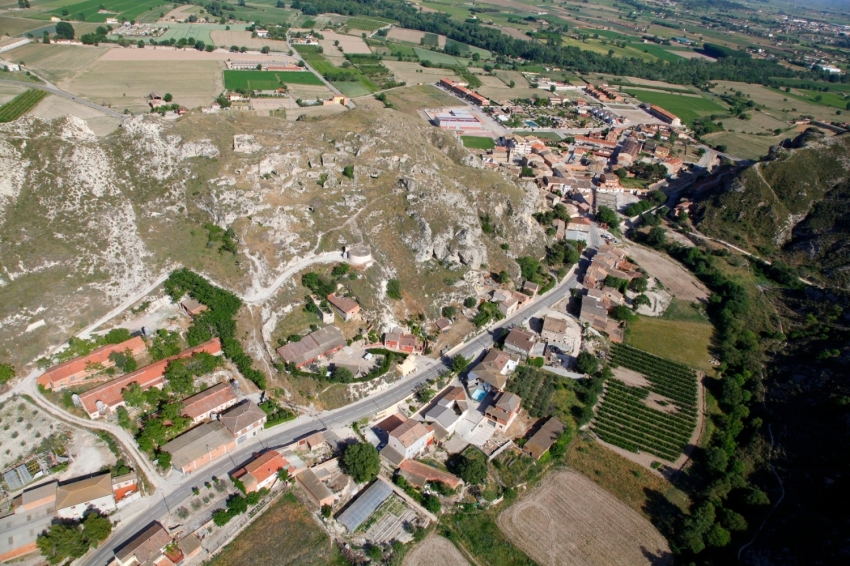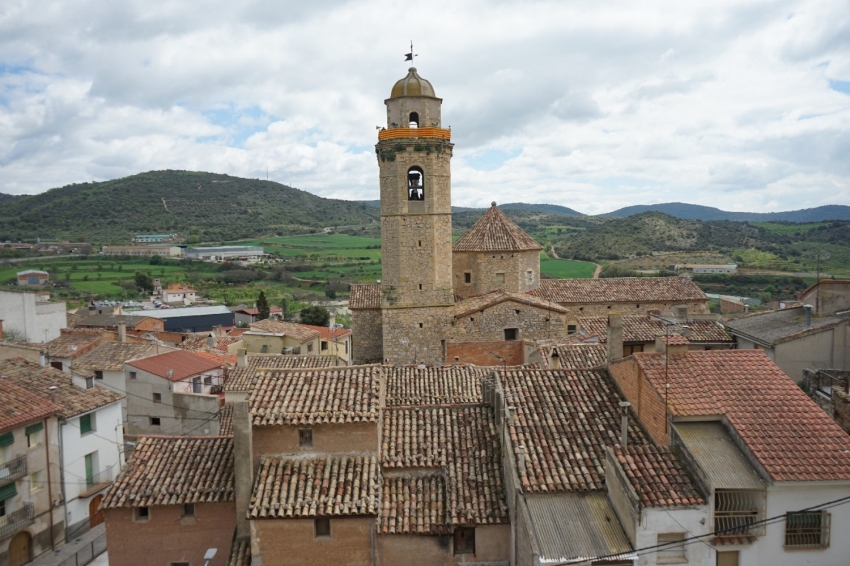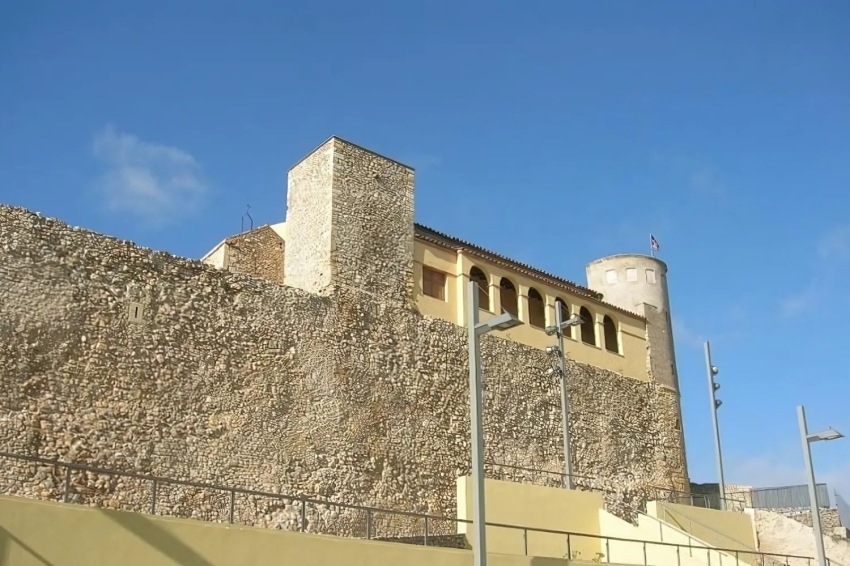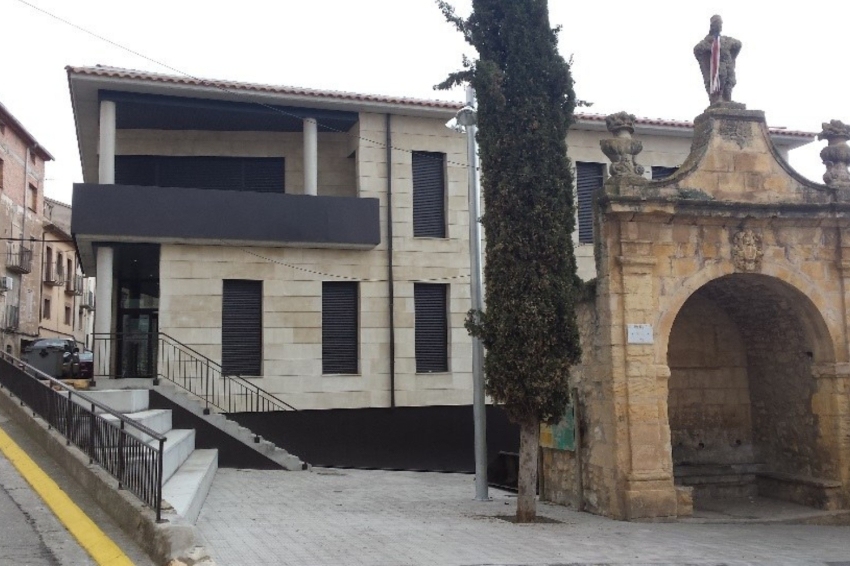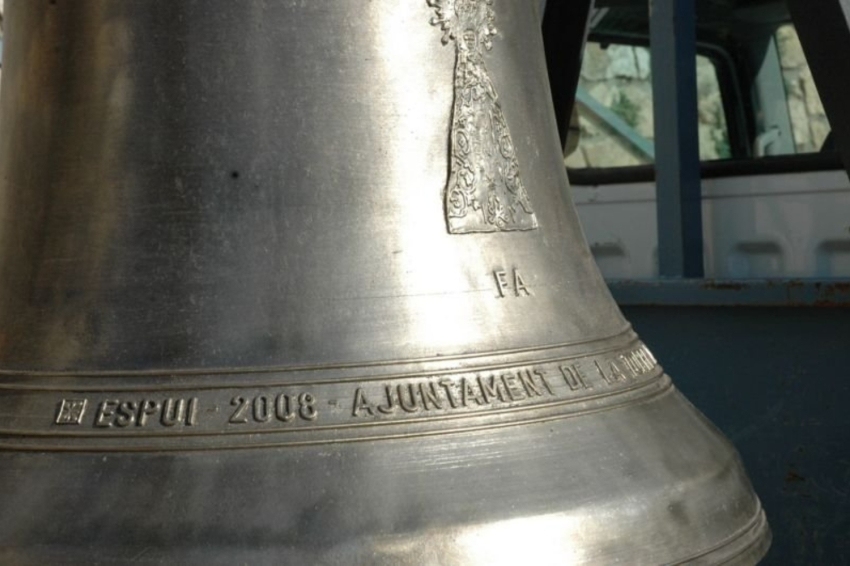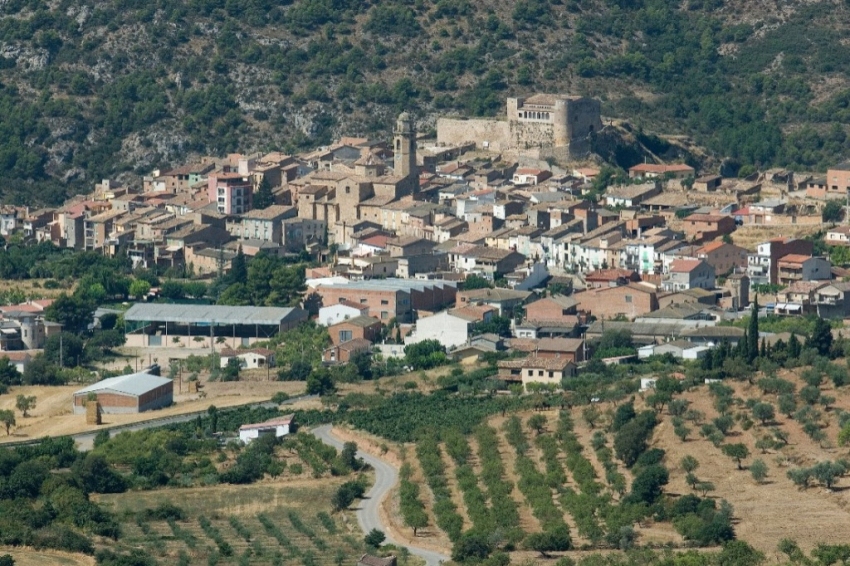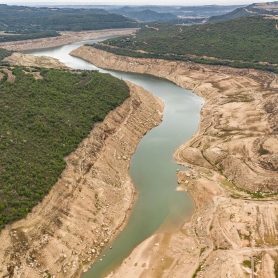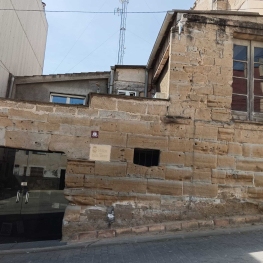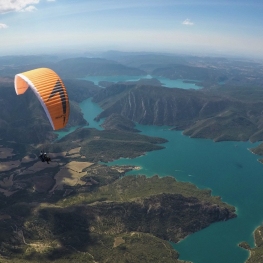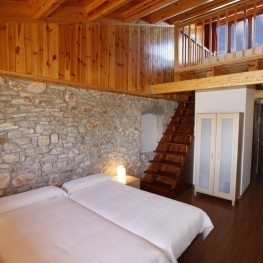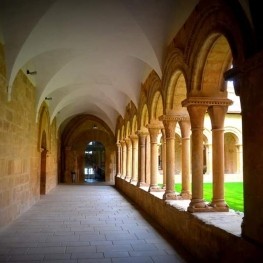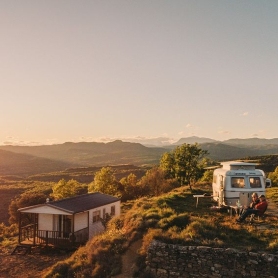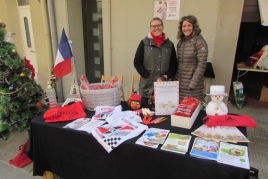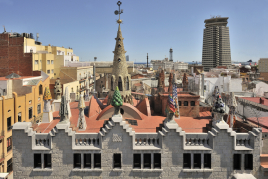Os de Balaguer
Os de Balaguer is a municipality in the region of La Noguera, very close to the capital of the region, Balaguer. Os is the main centre of the municipality, which is made up of the entities of Gerb, Alberola and the Monastery of les Avellanes. These centres have undergone changes over the years, since some formerly belonged to municipalities that no longer exist.
Os de Balaguer is crowned by a castle built by Ermengol IV Count of Urgell, where he died and where a cylindrical tower from the 13th century stands out. This castle is located on the top of a hill that is flanked by the Farfanya river and is also surrounded by a wall, which was already built in the 9th century, during the Muslim fortification. Today the narrow and steep streets with facades from the 17th and 18th centuries are still preserved.
Within the municipality of Os de Balaguer we find different places of interest.
places of interest
Monastery of Santa Maria de Bellpuig de les Avellanes
The monastery is made up of a Gothic church from the 14th century and a Romanesque cloister from the late 12th century, which is also the oldest part of the whole complex. In fact, the monastery has undergone various modifications, although it can be considered mostly Gothic.
Within the area of Os de Balaguer we also find an ancient female Cistercian monastery, of which only the apse area remains visible, known as the Monastery of Santa Maria de Vallverd.
Apart from the two monasteries mentioned above, Os de Balaguer has a good number of hermitages and sanctuaries such as the Sanctuary of Santa María de Cérvoles or the hermitage of Nostra Senyora d'Aguilar.
Cave of the Vilars
In this cave there are around 30 figures and symbols from rock paintings dating from 1800-650 BC. In addition to various stone structures, ceramic and bone tools were also discovered at the time of the discovery.
Os de Balaguer has several more caves, such as the Foric Cave, the Black Cave of Tragó and the Estret de Tragó Cave.
Sant Pitot Fountain
It is a monumental fountain from the 18th century with a rectangular floor plan and decorated with a statue of Neptune accompanied by two dogs and floral decorations.
In addition, there is also the old washhouse and water fountain that supplied the population of Os de Balaguer and is known as the Font Vella.
The Castle
The castle, of large proportions, with the primitive foundations corresponding to a Saracen fortress of the 9th century used for the defense of the border with the Carolingians.
The highlights include a cylindrical tower from the 13th century, a fragment of the wall and a few voussoired portals. It is currently undergoing restoration. Of Arab origin, it is documented as far back as 1036.
Situated on a hilltop above the village of Os de Balaguer, it controlled the upper part of the Farfanya River.
Canelles Reservoir
It is the largest in the Noguera Ribagorzana basin, with the highest dam in the country (137 metres) and the second highest in Europe when it was completed. It runs through places of great beauty, unknown to many people, on the border between the provinces of Lleida and Huesca.
Guided tours of the hydroelectric power station and the dam complex, including the Black Cave, are available. You can also enjoy an unforgettable catamaran ride on the reservoir to visit the Finestres rocks or the Mont-rebei gorge.
Sanctuary of Santa Maria de Cérvoles
It is located on a large flat area at an altitude of 778 metres. This Gothic chapel was demolished and a new church and a hostel for pilgrims were built in its place. Later, in the mid-20th century, the house was also demolished and the chapel rebuilt.
The hermitage is the only building left of an architectural complex that has changed greatly over the years.
Hermitage of Nostra Senyora d'Aguilar
Former Marian sanctuary that depended on the monastery of Sta. M. de Bellpuig de las Avellanes; built before the year 1240, the year in which the nuns who until then had been in the aforementioned monastery moved there.
According to Caresmar, excavations were carried out in 1740 which uncovered many sarcophagus burials without any inscription.
Female Cistercian Monastery of Santa Maria de Vallverd
The first document referring to the church of Sta. Maria dates back to 1092; during the following years many donations and purchases were made in its favour until 1452 when it was joined to Les Franqueses, due to economic hardship.
Only the head of the church remains, which was a single-nave building, covered with a barrel vault, with a pointed profile, with an eastern head formed by three apses, the central one of which is semicircular.
Hermitage of Sant Salvador
Ancient abandoned medieval population centre. It is typical that in later population concentrations many centres like these disappeared in the late Middle Ages.
Located right at the end of a small plain on the road that rises from the Vila-seca plain, dominating the entire Vila-seca plain and the ravines that descend towards the Santa Anna reservoir.
Medieval village of Vilot d'Alberola
Vilot was conquered from the Muslims at the end of the 11th century or beginning of the 12th century by Guerau Ponç II de Cabrera, becoming part of the Viscounty of Àger; it was probably abandoned in the Late Middle Ages.
A village enclosed by a wall, with a church and a possible castle, situated on the top of a hill, on a buttress of the Sant Miquel mountain range. It is located on the fields of Alberola, opposite the current village, in the shade.
Montessori, castle and village
Surveillance area over the Strait of Tragó conquered from the Arabs before 1104 was donated to the Abbey of Àger.
Located at the top and foot of some cliffs at the end of the Sierra de Sant Miquel; on the south side there is a cultivated plateau, to the north the shady side of Alberola and to the northwest the basin of the Noguera Ribagorzana. The constructive remains of the castle are very small. They are located on the top of the rocks.
Sant Antoni and the Virgin of Gerb
Old parish church; first documentary reference dates back to 1082. Also known as the Old Church of St. Salvador or the Church of Poble Vell.
Foric Cave
Cave that shows an evolution from the Neolithic to the Late Bronze Age in which the caves varied their function from habitat to burial place.
Located near the crest of the Sierra de Os, on the northern slope of the Sierra. Ideal for agriculture and incipient livestock farming.
Black Cave of Tragó
Period in which caves were once again used as habitat, combined with open-air settlements.
Located at the foot of S. De Blancafort, 75 m above the Noguera Ribagorzana riverbed, with a magnificent view over an old river gorge (now a dam of the Canelles Reservoir).
Cave of the Estret de Tragó
The Estret de Tragó is a limestone shelter located on the edge of the Noguera Ribagorzana, currently the Santa Anna reservoir (Os de Balaguer, Lleida). The site was discovered in 1989 when the reservoir was emptied and a series of graphic documentation works were carried out on the historical heritage of the area.
The old ones
Typical spur settlement from the Late Bronze Age, enclosed by a wall through the only easy access and probably a moat. There are remains of the wall and terraces on the slope to make it habitable. Material remains of some fragments of handmade pottery.
Font Vella
Former washhouse and water fountain in the town of Os de Balaguer. Currently, in ruins, a stone wall and four ceramic pillars with wooden beam edges that formed the roof and the sinks of the washhouses are still standing.
Beginning of the Menárguenos Ditch
17th century, civil infrastructure works of the enlightened Iberian monarchies, in this case to improve irrigation in the Balaguer plain.
Morulls capitals (Gerb)
They come from the Roman villa in the Morulls area, in Gerb. They decorate and support the altar of the new church of Sant Salvador de Gerb.
Four capitals with an inverted truncated pyramid shape present a solution that goes from the circle at the base of the capital (with a slightly marked collar on three capitals) to the square shape of the upper part of the abacus, which has three dice per face, one at each angle and the third in the centre.
Saint Mary of Montessor
It is a building with a single nave, covered with a barrel vault, crowned to the east by a semicircular apse, of which only vestiges of the lower rows remain. The entire western part, where the door and a window are located, has been looted, and the entire exterior wall of the façade is missing.
Pipe organ of the Monastery of les Avellanes
The municipality of Os de Balaguer has a pipe organ. This organ is located in the Monastery of Santa Maria de Bellpuig de les Avellanes, and together with those of Ponts and Àger are the only ones remaining in the region of La Noguera.
The church of the monastery of Santa Maria de Bellpuig de les Avellanes has had an organ since at least the 18th century.
Streets of the old town
The old town was walled. It still preserves narrow and steep streets where you can see some facades and doorways, some from the 17th and 18th centuries. Urban planning developed from the Castle. The oldest architecture is preserved in the buildings located between the castle and the village church.
Nearby routes
See all routes »- The honey cooking
- Pala Alta from the Virgin of Montalegre (a 5.5 km)
- A trip in the Lakes' Train (a 11.5 km)
- Urgell Canal pedal route (a 11.5 km)
- Grand Tour de Catalunya - Section 3.… (a 11.5 km)
What to do
Where to eat
Hotel-Restaurant Port d'Àger
Àger (a 12.8 Km)The hotel is designed to accommodate families, friends, and corporate groups, as…
El Dien Restaurant
Vallfogona de Balaguer (a 15.3 Km)We love cooking, and we love our customers to receive on the…
Where to sleep
Monestir de les Avellanes
Os de BalaguerAn ancient 12th century abbey adapted to the needs of the 21st…
Hotel-Restaurant Port d'Àger
Àger (a 12.8 Km)The hotel is designed to accommodate families, friends, and corporate groups, as…
Eco Càmping Terra del Congost
Tremp (a 28.2 Km)Terra del Congost is an old farm converted into an Eco Camping…

